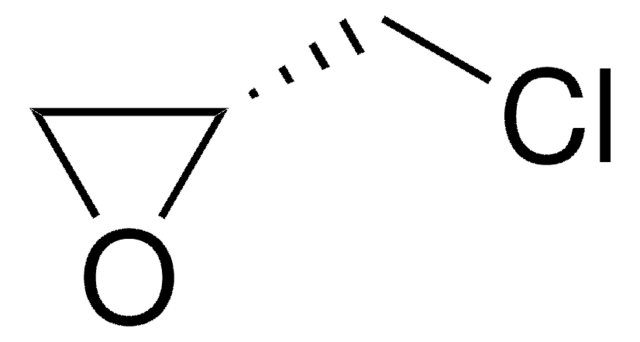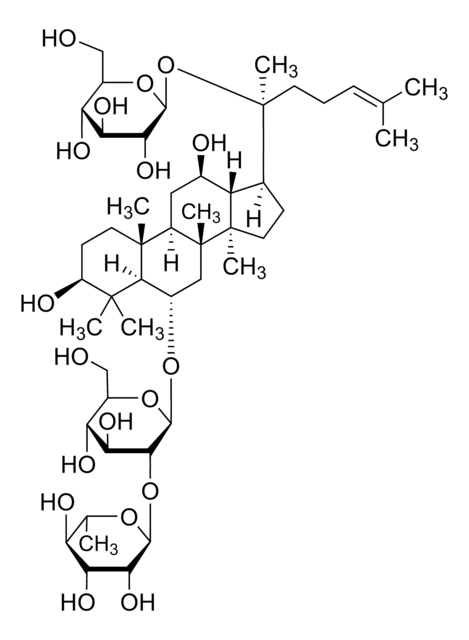02578
(±)-Epichlorohydrin
analytical standard
Synonym(s):
(±)-2-(Chloromethyl)oxirane, 1-Chloro-2,3-epoxypropane
About This Item
Recommended Products
grade
analytical standard
Quality Level
vapor density
3.2 (vs air)
vapor pressure
13.8 mmHg ( 21.1 °C)
Assay
≥99.9% (GC)
autoignition temp.
779 °F
shelf life
limited shelf life, expiry date on the label
expl. lim.
21 %
technique(s)
HPLC: suitable
gas chromatography (GC): suitable
refractive index
n20/D 1.438 (lit.)
n20/D 1.438
bp
115-117 °C (lit.)
mp
−57 °C (lit.)
density
1.183 g/mL at 25 °C (lit.)
application(s)
cleaning products
cosmetics
environmental
food and beverages
personal care
format
neat
SMILES string
ClCC1CO1
InChI
1S/C3H5ClO/c4-1-3-2-5-3/h3H,1-2H2
InChI key
BRLQWZUYTZBJKN-UHFFFAOYSA-N
Looking for similar products? Visit Product Comparison Guide
General description
Application
It may be used as a reference standard for the analysis of (±)-ECH in drinking water by ion chromatography and in effluent water from wastewater treatment plants by HS-solid phase microextraction (HS-SPME) combined with GC-flame ionization detector (GC-FID) and GC-ECD.
Signal Word
Danger
Hazard Statements
Precautionary Statements
Hazard Classifications
Acute Tox. 3 Dermal - Acute Tox. 3 Inhalation - Acute Tox. 3 Oral - Carc. 1B - Eye Dam. 1 - Flam. Liq. 3 - Repr. 2 - Skin Corr. 1B - Skin Sens. 1
Storage Class Code
3 - Flammable liquids
WGK
WGK 3
Flash Point(F)
82.4 °F
Flash Point(C)
28 °C
Personal Protective Equipment
Choose from one of the most recent versions:
Already Own This Product?
Find documentation for the products that you have recently purchased in the Document Library.
Our team of scientists has experience in all areas of research including Life Science, Material Science, Chemical Synthesis, Chromatography, Analytical and many others.
Contact Technical Service












